OEM Optics vs Third-Party Transceivers: Which to Choose?
Third-party transceiver has gone into fiber optic transceiver market for years. Topics around OEM (original equipment manufacturers) optical module vs third-party transceiver have been attached great attention. Compatibility, quality and warranty of optical module are what the users care about when they consider third-party transceivers. However, there exist both doubts and praise to third-party compatible transceiver modules. Then OEM optics vs third-party transceivers: which to choose? Should we buy third-party optical modules? Have a look at the following in-depth analysis.
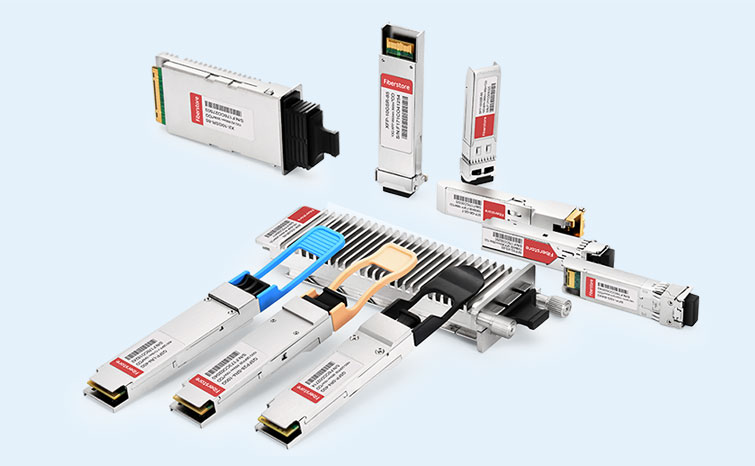
OEM Optics vs Third Party Transceivers: What’s the Difference?
Before making a decision to choose which type, let’s spend a little time to know what is OEM optics and what is a third-party transceiver. OEM optics refer to the original brand optics provided by original equipment manufacturers. While third-party compatible optical module means the optical transceiver is provided by another vendor, instead of the OEM, who can offer or produce the optics with the same specifications.
Except for the different manufacturers, there is no big difference between OEM optic and third-party transceiver modules. The only difference is that the OEM optics usually have a higher price because they claim to be of such high quality. Actually, OEMs do not produce their own optical modules. They buy from their suppliers who code and label for them. It’s no secret that Cisco buys optical transceivers from optical transceiver manufacturers like Finiser, and then sells the transceivers to end users with a quite high price. The reason why Cisco transceivers are more expensive is that they have tested the transceivers they offer with their equipment to verify it works, which now can be done by many optical transceiver manufacturers. You can read this tutorial to know more differences between OEM optics and third-party transceiver: All About Compatibility: Third-Party vs. Brand Optics
OEM Optics vs Third Party Transceivers: Any Hidden Problem?
Apart from the compatibility problem, equipment warranty is another issue which users need to consider. Before we get into this topic, let’s have a look at the warranty policies of several popular equipment manufacturers.
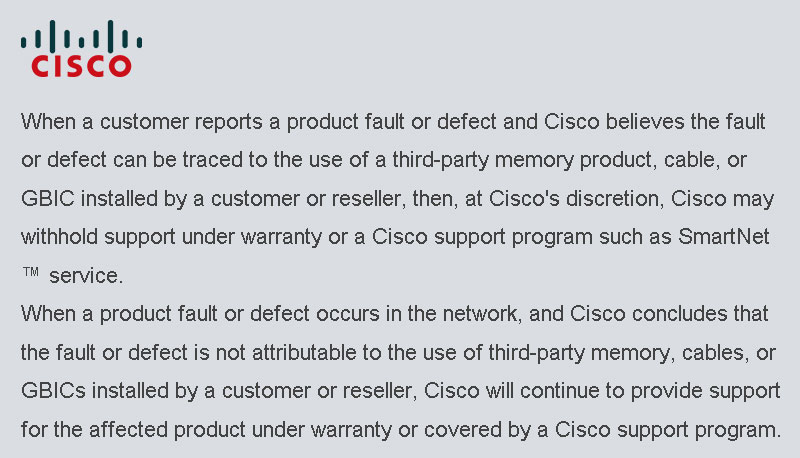
Hidden Meaning: If fault or equipment defect is caused by third-party hardware product—Cisco will withhold warranty support; If fault or equipment defect is not caused by third-party hardware—warranty will be supported by Cisco.
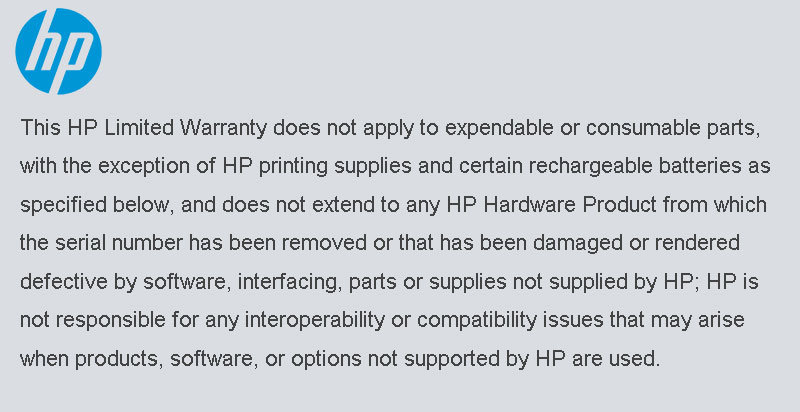
Hidden Meaning: HP limited warranty does not apply if HP equipment get defective due to use third-party hardware.
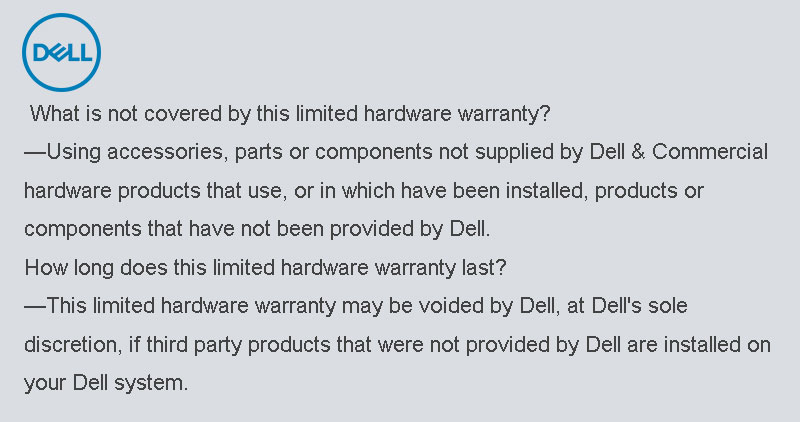
Hidden Meaning: If the fault caused by third-party hardware, Dell has right to refuse to repair it.
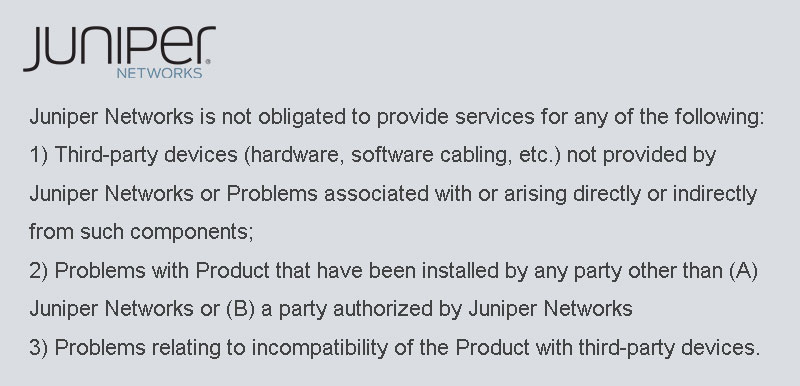
Hidden Meaning: Support services won’t be available for third-party devices which are not provided by Juniper Network. But the support services will be provided until the third-party hardware like optical transceivers are swapped to the original ones.
From the several policies, we can see that the big network equipment vendors have similar rules on using third-party optical transceivers—if problems are caused by third-party compatible transceiver modules, warranty support will be refused until the fiber optic transceivers are changed to OEM ones.
Using Third-Party Transceivers Means Loss the Equipment Warranty?
Though third-party transceivers are known as lower price, some end users still have doubt about its quality and performance, especially the assumption that third-party optical modules may void the OEM device warranty, which may lead to the loss of tech support from the equipment manufacturers. When users spend thousands of dollars on their network switches or other equipment, this worry becomes stronger. Then a problem arises: does third-party transceiver module provide the same performance and quality standards as OEM optics?
Absolutely yes! The optical transceiver module is standardized by SFP MSA (multi-source agreement) that is a subset of SFF commitment, which means there is no big difference between OEM optics and third-party optical transceivers because of the same rules and standards.
If the equipment is defective, the vendors are obliged to fulfill the terms of the warranty because good third-party optical modules are fully compliant to MSA specification, unless it can be verified that it is the use of the third-party optics that damaged the equipment. However, it is unlikely that fiber optic transceivers will induce damages to the slot on equipment by itself.
Take Gigabit Ethernet SFP transceiver as an example, SFP module converts electrical data from the equipment to optical signals. There is no incoming power surging from an optical port to damage the equipment. SFP draws voltage/power from the equipment and it is more likely that the equipment would damage the SFP. All current and voltage required are as per MSA and the equipment should be able to support the power requirements for each SFP port.
Then why network equipment vendors have such strict warranty policies against third-party transceivers? The answer is network equipment manufacturers have to make sure their own profit, which can be understood from the view of themselves. So they make such warranty policies to affect customers, making them think there are problems if users purchase third-party optical modules and use them in the OEM devices.
OEM Optics vs Third Party Transceivers: How to Choose?
No matter how high the price of OEM optics, or how cost-effective the third-party transceivers, the choice between OEM optics vs third-party transceivers is not difficult to make. It depends on what the users care about. If the compatibility and name brand are paramount parameters to consider, OEM optics are more suitable to choose. If not, why not choose compatible third-party transceivers with more flexibility?
In fact, in addition to the low cost mentioned above, there are many benefits of third-party transceivers. Read this article to get more details about third-party compatible transceivers modules: Isn’t Compatible Module Better Than OEM Module?
In addition, when buying compatible third-party optical transceivers, a reliable vendor is very important. FS.com is a professional optical transceiver manufacturer. The main advantages of FS.com are competitive prices, large inventory and excellent quality. Every FS.com compatible transceiver module is individually tested on a wide range of the same brand devices to ensure transceivers’ quality and compatibility. FS.com provides a full selection of major brands’ compatible transceiver modules and generic modules, not limited to GBIC, SFP, SFP+, QSFP+, CFP and other transceivers of Cisco, Arista, Juniper, Huawei, Dell, HPE, etc. More information, please visit www.fs.com.
Related article:
FS.com QSFP+ Optical Modules Solution
You might be interested in
Email Address

-
PoE vs PoE+ vs PoE++ Switch: How to Choose?
May 30, 2024













